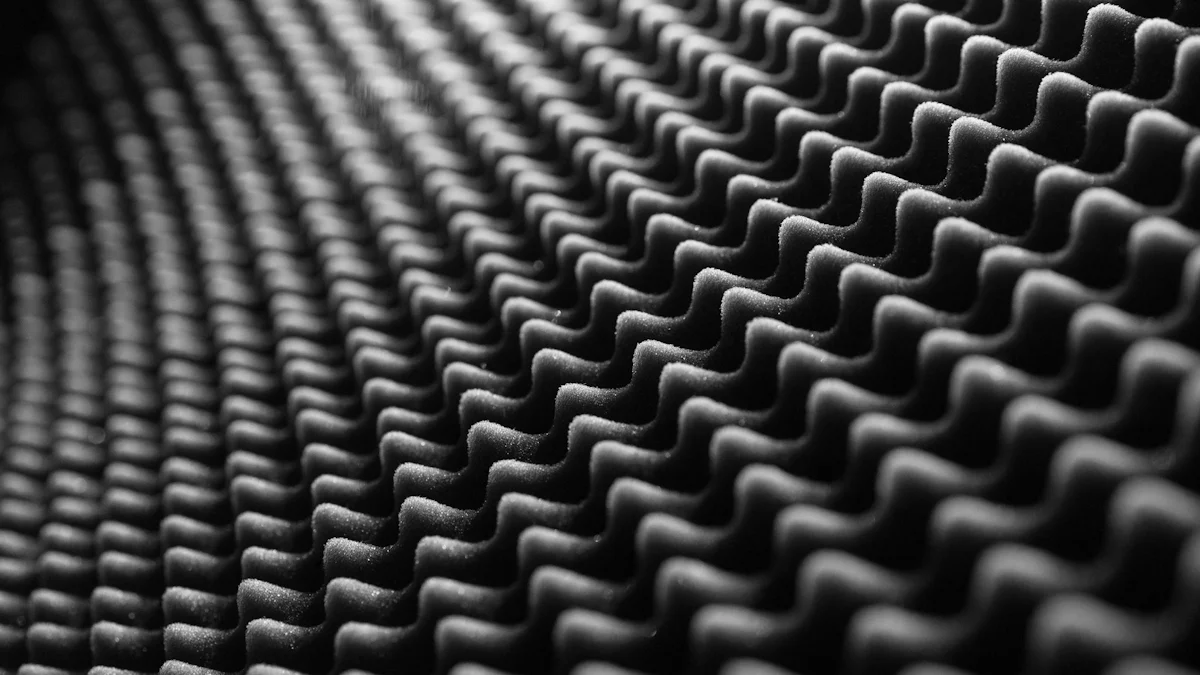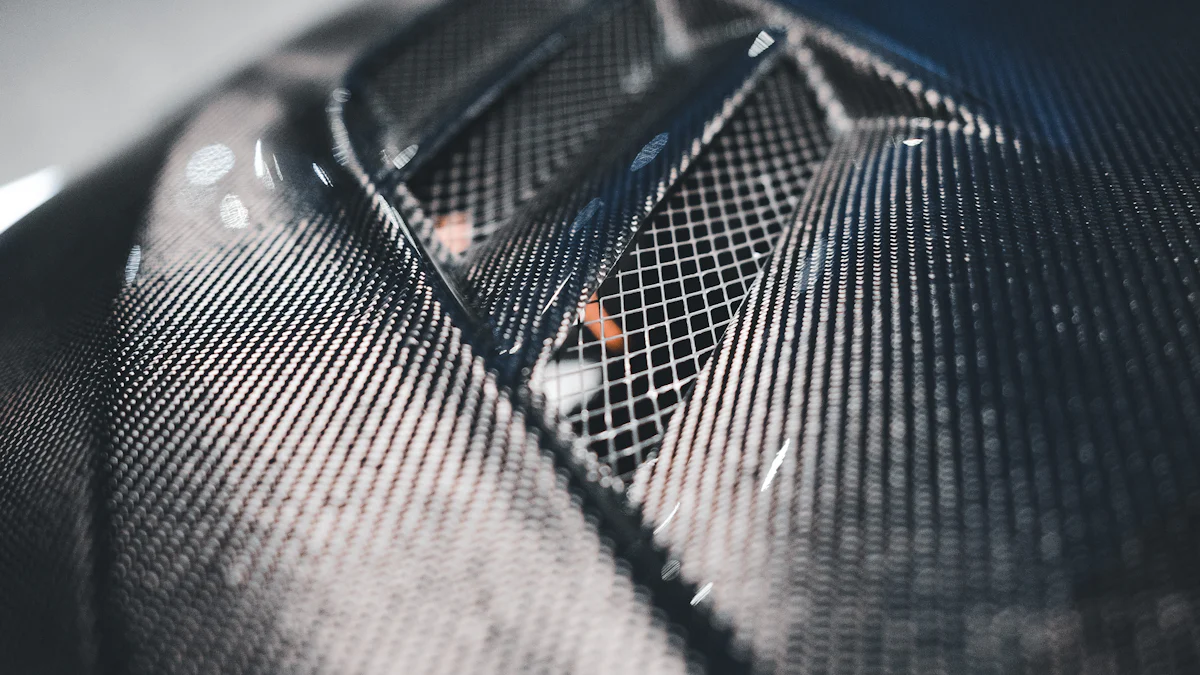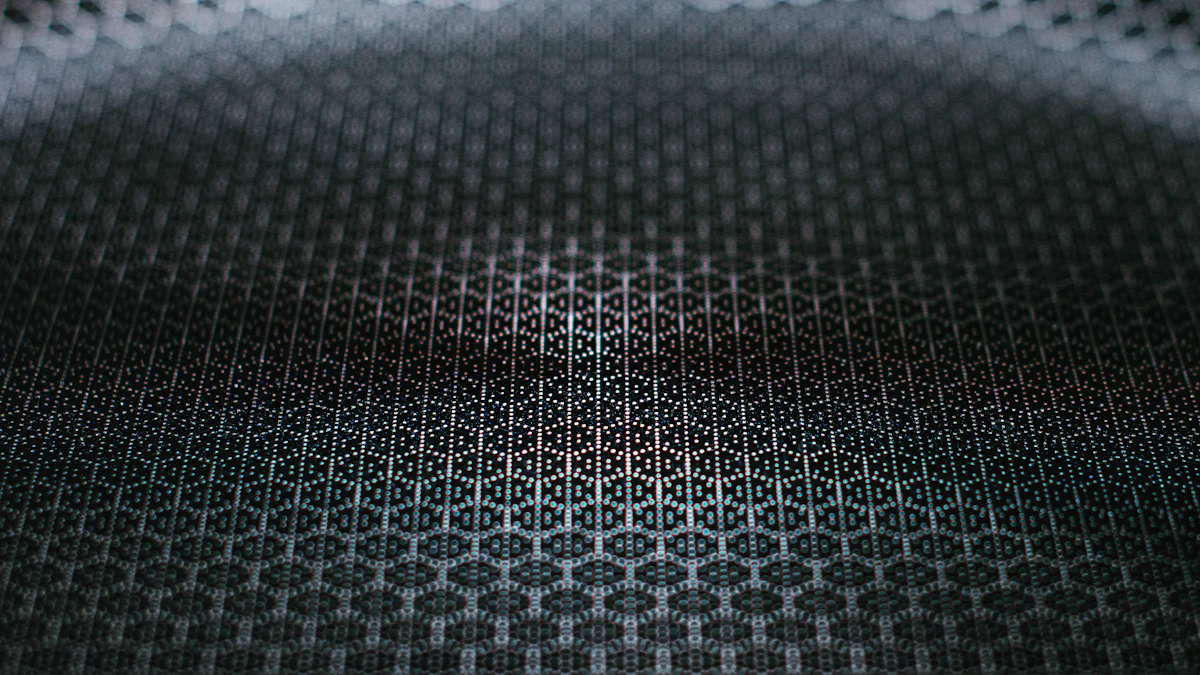
Kohlenstoff-Kohlenstoff-Verbundwerkstoffe are essential in industries that demand materials capable of enduring extreme conditions. With their outstanding mechanical properties at elevated temperatures, they have become a cornerstone in high-performance sectors. These composites, including carbon fiber carbon plate options, provide low density, making them ideal for lightweight applications. Their remarkable resistance to thermal stresses is particularly valuable in aerospace and other challenging fields. The growing need for lightweight, high-performance materials in industries such as automotive and energy highlights the significance of anwendungen von kohlenstoff-kohlenstoff-verbundwerkstoffen. This blog delves into how other composites measure up to carbon-carbon composites, examining their benefits and uses across various applications.
Wichtigste Erkenntnisse
- Kohlenstoff-Kohlenstoff-Verbundwerkstoffe excel in high-temperature environments, maintaining their strength and performance where other materials fail.
- While other composites like glass fiber and polymers are more cost-effective, they often lack the superior strength-to-weight ratio and thermal resistance of carbon-carbon composites.
- The recyclability of polymer composites offers significant environmental benefits, making them a sustainable choice for industries focused on reducing their ecological footprint.
- In applications requiring extreme durability, such as aerospace and high-performance automotive, carbon-carbon composites remain the preferred material due to their unmatched properties.
- Understanding the specific needs of your application can help you choose the right composite material, balancing cost, performance, and environmental impact.
Overview of Carbon Carbon Composites
Key Properties
High heat resistance
Carbon carbon composites exhibit exceptional heat resistance, making them indispensable in high-temperature environments. These materials retain their mechanical properties even at extreme temperatures, ensuring reliable performance in demanding applications. Their high-temperature stability sets them apart from other composites, which often degrade or lose strength under similar conditions.
Gewichtsverhältnis
The strength-to-weight ratio of carbon carbon composites is among the highest in advanced materials. This property allows industries to design lightweight yet robust components, reducing overall weight without compromising structural integrity. Their low density further enhances their suitability for applications requiring both strength and reduced mass.
Widerstand gegen thermischen Schock
Thermal shock resistance is another defining feature of carbon carbon composites. These materials can endure rapid temperature changes without cracking or deforming. This capability is critical in applications where sudden temperature fluctuations are common, such as aerospace and industrial processes.
Other unique properties of carbon carbon composites include superior thermal conductivity, chemical inertness, biocompatibility, and high specific stiffness. These attributes contribute to their versatility and effectiveness in various high-performance applications.
Anwendungen
Aerospace and space exploration
Carbon carbon composites play a pivotal role in aerospace and space exploration. Their lightweight nature and ability to withstand extreme temperatures make them ideal for components like heat shields, rocket nozzles, and aircraft brakes. The aerospace sector represents the largest market share for these materials due to their unmatched performance.
High-performance automotive components
In the automotive industry, carbon carbon composites are used in high-performance components such as brake discs and clutches. These materials enhance vehicle efficiency by reducing weight and improving durability under high-stress conditions.
Industrial uses (e.g., furnaces, brakes)
Industries rely on carbon carbon composites for applications like furnace linings and industrial brakes. Their resistance to thermal and mechanical stresses ensures longevity and reliability in harsh operating environments. The table below highlights their significance across various sectors:
| Industriesektor | Application Significance |
|---|---|
| Luft- und Raumfahrt und Verteidigung | Largest market share due to demand for lightweight and high-strength materials. |
| Industriell | Significant growth driven by use in automotive, electronics, and construction. |
| Medical | Steady growth due to demand for biocompatible and lightweight materials. |
| Energy | Growth driven by demand for lightweight and durable materials in oil and gas. |
| Other Applications | Moderate growth in areas like sporting goods, consumer electronics, and marine. |
Carbon carbon composites continue to dominate industries requiring materials that combine strength, heat resistance, and durability. Their unique properties and diverse applications underscore their importance in modern technology.
Advantages of Other Composites Compared to Carbon Carbon Composites

Cost Benefits
Lower production costs of glass fiber composites
Glass fiber composites offer a significant cost advantage over carbon carbon composites. Their production process involves less expensive raw materials and simpler manufacturing techniques. This makes them an economical choice for industries that prioritize affordability without compromising functionality. For example, glass fiber composites are widely used in applications like construction and consumer goods, where cost efficiency is critical.
Abundance of raw materials for polymer-based composites
Polymer-based composites benefit from the widespread availability of their raw materials. Polymers, combined with reinforcements like glass or natural fibers, are easy to source and process. This abundance reduces supply chain complexities and ensures consistent production. Industries such as packaging and sports equipment manufacturing rely on these composites for their cost-effectiveness and accessibility.
Versatility
Use of carbon fiber-reinforced polymers in sports equipment
Carbon fiber-reinforced polymers (CFRPs) demonstrate exceptional versatility. Their properties can be tailored by adjusting the type and orientation of carbon fibers, enabling customization for specific applications. In sports equipment, CFRPs provide superior resistance to impact and cracking, making them ideal for items like tennis rackets, bicycles, and golf clubs. This adaptability allows manufacturers to meet diverse performance requirements.
Glass fiber composites in construction and infrastructure
Glass fiber composites play a vital role in modern construction and infrastructure.
- Utility poles and cables made from these composites offer durability and corrosion resistance, ensuring long-term reliability.
- Wastewater treatment projects, such as the Central Interceptor in Auckland, utilize fiberglass composites for shafts that withstand corrosive environments.
- Innovative designs, like CirculinQ panels, manage flooding effectively in foot and bike paths.
These applications highlight the material’s ability to address unique challenges in civil engineering and urban planning.
Lightweight Features
Weight comparison with polymer composites
Polymer composites are often lighter than carbon carbon composites, making them advantageous in weight-sensitive applications. Their reduced weight simplifies handling and installation processes, particularly in industries like construction and transportation. This feature also contributes to energy efficiency in mobile applications.
Benefits in transportation and mobility
The lightweight nature of polymer and glass fiber composites enhances their utility in transportation. Vehicles incorporating these materials achieve improved fuel efficiency and reduced emissions. Additionally, their use in aircraft interiors and lightweight panels supports the aviation industry’s push for sustainability. These benefits make them a preferred choice for mobility-focused innovations.
Environmental Advantages
Recyclability of polymer composites
Polymer composites offer a significant environmental advantage due to their recyclability. These materials can be broken down and reused, reducing waste and conserving natural resources. Thermoplastic-based composites, in particular, stand out for their ability to be melted and reshaped into new products. This process transforms waste into valuable feedstock, minimizing reliance on petrochemicals. Industries using additive manufacturing benefit greatly from this feature, as it supports sustainable production practices. By enabling material recovery, polymer composites help lower their overall environmental footprint. This makes them an attractive option for industries aiming to adopt greener practices.
Recyclability also plays a critical role in reducing landfill contributions. Unlike traditional materials, polymer composites can undergo multiple recycling cycles without significant degradation in quality. This durability ensures that fewer raw materials are extracted, preserving ecosystems and reducing energy-intensive mining activities. As industries continue to prioritize sustainability, the recyclability of polymer composites positions them as a forward-thinking choice for environmentally conscious applications.
Lower energy requirements in manufacturing
The production of polymer composites requires less energy compared to carbon carbon composites. Their manufacturing processes often involve lower temperatures and simpler techniques, which reduce energy consumption. For example, glass fiber-reinforced polymers can be produced using room-temperature curing methods, eliminating the need for energy-intensive furnaces. This efficiency not only lowers production costs but also decreases greenhouse gas emissions associated with manufacturing.
Additionally, the lightweight nature of polymer composites contributes to energy savings during transportation. Lighter materials require less fuel to transport, further reducing their carbon footprint. This advantage becomes particularly important in industries like construction and automotive, where large volumes of materials are moved regularly. By combining energy-efficient production with reduced transportation emissions, polymer composites offer a compelling case for sustainable material solutions.
The environmental benefits of polymer composites, including their recyclability and lower energy requirements, make them a strong alternative to carbon carbon composites in applications where extreme performance is not required.
Disadvantages of Other Composites Compared to Carbon Carbon Composites

Heat Resistance Limitations
Challenges of polymer-based composites in high-temperature environments
Polymer-based composites struggle to maintain their structural integrity in high-temperature conditions. Their resin matrices often degrade or soften when exposed to extreme heat, leading to compromised performance. This limitation restricts their use in applications requiring prolonged exposure to elevated temperatures, such as industrial furnaces or aerospace components. Unlike carbon carbon composites, which excel in such environments, polymer-based alternatives fail to deliver consistent results under thermal stress.
Failures in aerospace or industrial applications
The inability of some composites to endure extreme temperatures has led to notable failures in aerospace and industrial settings.
- Die X-33 Venture Star project encountered issues with composite fuel tanks that could not withstand cryogenic temperatures, resulting in gas leakage and structural failure.
- Elon Musk’s Starship design faced challenges with composite materials during re-entry due to their inability to handle high temperatures and cryogenic conditions.
These examples highlight the risks associated with using composites that lack sufficient heat resistance in critical applications.
Structural Limitations
Comparison of strength-to-weight ratios
While many composites offer lightweight properties, their strength-to-weight ratios often fall short compared to carbon carbon composites. Glass fiber composites, for instance, provide adequate strength for general applications but cannot match the superior mechanical performance of carbon carbon composites. This disparity limits their use in high-stress environments where both strength and reduced weight are essential.
Load-bearing challenges
Other composites frequently face challenges in load-bearing applications. Polymer-based composites, in particular, exhibit lower stiffness and strength, making them unsuitable for heavy-duty structural components. This limitation becomes evident in industries like construction and aerospace, where materials must endure significant mechanical loads without deformation or failure.
Durability in Extreme Conditions
Degradation under UV or chemical exposure
Many composites degrade when exposed to ultraviolet (UV) radiation or harsh chemicals. Polymer-based materials, for example, can become brittle or discolored after prolonged UV exposure. Similarly, chemical environments, such as those found in industrial processes, can weaken these composites over time. This vulnerability reduces their lifespan and reliability in demanding conditions.
Wear and tear in high-stress environments
Composites like glass fiber and polymer-based materials often experience accelerated wear and tear in high-stress environments. Repeated mechanical stresses, such as those encountered in automotive or industrial applications, can lead to cracking, delamination, or surface erosion. These issues limit their effectiveness in scenarios requiring long-term durability and resilience.
Carbon carbon composites, by contrast, demonstrate exceptional performance in extreme conditions, making them indispensable for applications where other composites fall short.
Specialized Applications
Incompatibility with aerospace-grade requirements
Aerospace applications demand materials that can endure extreme conditions, including high temperatures and cryogenic environments. Many composites fail to meet these stringent requirements. For instance, polymer-based composites lose their structural integrity when exposed to temperatures exceeding 200 degrees Celsius. Similarly, cryogenic conditions cause these materials to become brittle and weak. These limitations make them unsuitable for critical aerospace components, such as heat shields or rocket nozzles, which must perform reliably during re-entry from orbital velocities. Carbon-carbon composites, on the other hand, excel in these scenarios due to their superior thermal stability and mechanical strength.
The aerospace industry also requires materials with exceptional resistance to thermal shock and mechanical stress. Other composites often fall short in these areas, leading to performance issues in high-stakes environments. For example, glass fiber composites lack the durability needed to withstand the rapid temperature changes experienced during space missions. This incompatibility restricts their use in aerospace-grade applications, where failure is not an option.
Limitations in high-performance automotive uses
High-performance automotive applications demand materials that combine lightweight properties with exceptional strength and durability. While polymer and glass fiber composites offer weight advantages, they struggle to match the mechanical performance of carbon-carbon composites. Components like brake discs and clutches, which operate under intense heat and stress, require materials with superior thermal resistance and wear properties. Other composites often degrade or fail under these conditions, limiting their effectiveness in high-performance vehicles.
Additionally, the automotive industry prioritizes materials that can endure prolonged mechanical stress without compromising safety or efficiency. Polymer-based composites, despite their versatility, exhibit lower stiffness and strength compared to carbon-carbon composites. This makes them less suitable for critical components in sports cars or racing vehicles, where reliability and performance are paramount. Carbon-carbon composites remain the preferred choice for these demanding applications due to their unmatched combination of strength, heat resistance, and durability.
Carbon carbon composites stand out in high-performance applications due to their exceptional strength, thermal stability, and resistance to extreme conditions. These materials excel in industries like aerospace, automotive, and industrial manufacturing, where precision and durability are critical. Their low coefficient of thermal expansion and design flexibility further enhance their utility in demanding scenarios.
Other composites, however, offer distinct advantages in cost, versatility, and environmental impact. Their durability and efficiency contribute to long-term cost savings, while their lightweight nature improves energy efficiency. Additionally, their adaptability allows for widespread use across industries, from construction to consumer goods.
While other composites are ideal for general-purpose applications, carbon carbon composites remain indispensable in extreme environments. Emerging trends, such as advancements in manufacturing techniques and bio-based composites, may further expand the possibilities for all composite materials in the future.
FAQ
Woraus bestehen Kohlenstoff-Kohlenstoff-Verbunde?
Kohlenstoff-Kohlenstoff-Verbundwerkstoffe consist of carbon fibers embedded in a carbon matrix. Manufacturers use high-temperature processes to create these materials, ensuring exceptional strength and thermal resistance.
Why are carbon-carbon composites preferred in aerospace?
Their ability to withstand extreme temperatures and thermal shocks makes them ideal for aerospace applications. These composites also offer a high strength-to-weight ratio, ensuring lightweight yet durable components.
Are polymer composites recyclable?
Yes, many polymer composites, especially thermoplastics, are recyclable. They can be melted and reshaped into new products, reducing waste and conserving resources.
How do glass fiber composites benefit construction?
Glass fiber composites provide durability, corrosion resistance, and lightweight properties. These features make them suitable for infrastructure projects like utility poles, wastewater systems, and flood management panels.
Can other composites replace carbon-carbon composites in high-performance applications?
Other composites often lack the heat resistance and mechanical strength required for extreme conditions. While they excel in cost and versatility, they cannot fully replace carbon-carbon composites in aerospace or high-performance automotive uses.